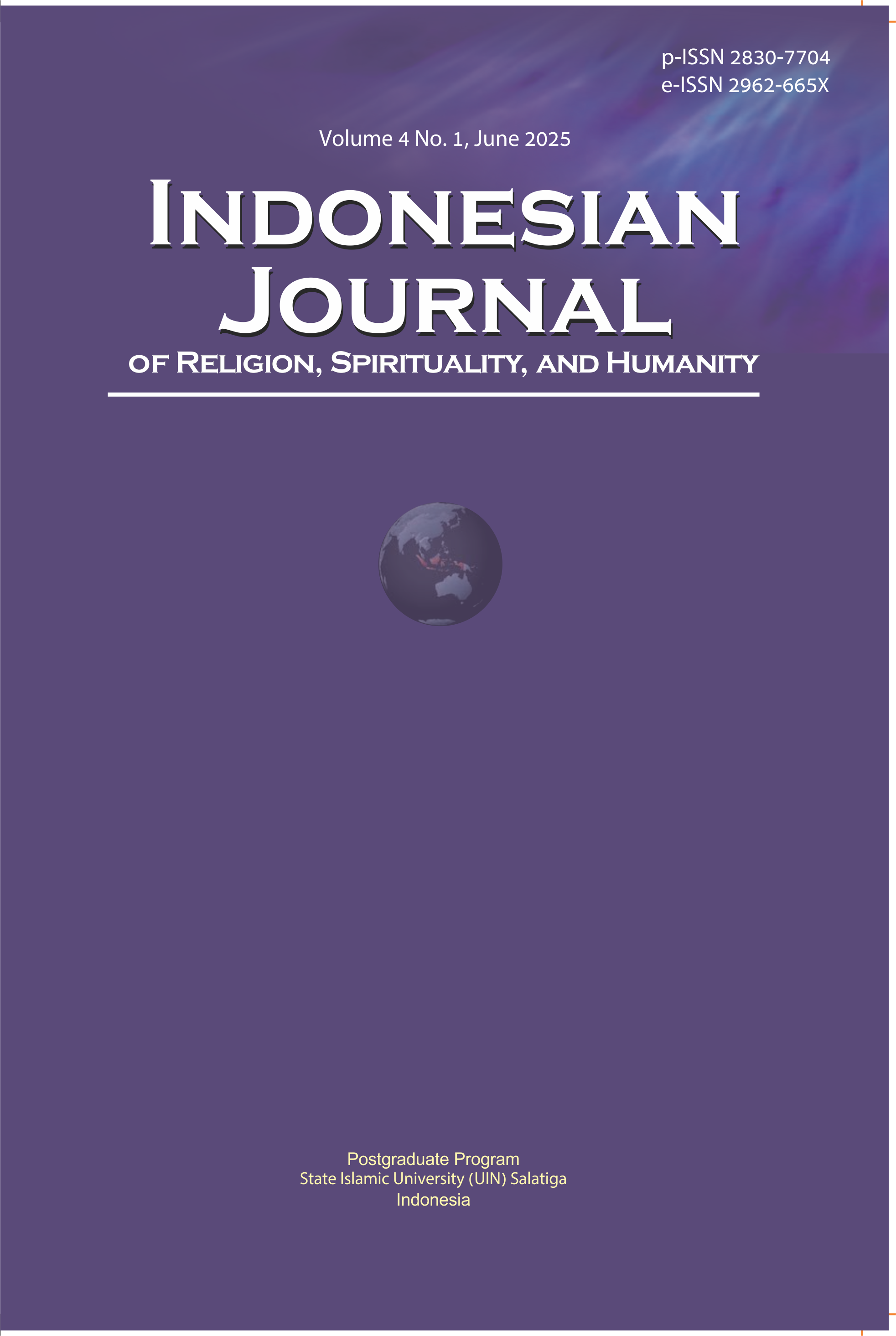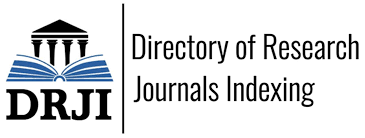Tombor maghi as an interfaith ritual: lived religion among Muslims and Christians in West Papua, Indonesia
DOI:
https://doi.org/10.18326/ijoresh.v4i1.55-84Keywords:
Ritual, Interfaith dialogue, Tombor Maghi, Lived religionAbstract
This article explores the Tombor Maghi ritual among the Fakfak community in West Papua Province, Indonesia, which strengthens interfaith relations, particularly between Muslims and Christians. Originally part of a traditional marriage custom, the ritual has developed into a broader form of community solidarity involving cross-religious cooperation. While scholars in anthropology and sociology have extensively studied rituals, research that focuses explicitly on rituals within the context of inter-religious relations remains relatively underdeveloped. This study addresses three main research questions: how the Tombor Maghi ritual is practiced and interpreted by the Fakfak community across religious affiliations; what role the ritual plays in fostering interfaith cooperation and reinforcing communal solidarity; and what symbolic and social significance the ritual holds within the broader framework of lived religion and indigenous approaches to peacebuilding. This study employs a qualitative methodology, utilising a realist ethnographic approach. Data were collected through interviews and field observations conducted in Fakfak Regency. The findings indicate that Tombor Maghi continues to be preserved as a form of cultural dialogue that weaves together interfaith relations. The ritual reflects cultural knowledge that is created, transmitted, and practised in daily life. It provides a space for Muslims and Christians to collaborate through community-based initiatives, such as at mosques and churches. In light of these findings, further research related to this topic is suggested because there are still many interesting issues to discuss in connection with rituals that have become a philosophy in social life.
References
Ahmad, P. A. B. (2023). Statistik Daerah Kabupaten Fakfak. Badan Pusat Statistik Kabupaten Fakfak.
Al Qurtuby, S. (2015). Ambonese muslim jihadists, Islamic identity, and the history of christian-muslim rivalry in the Moluccas, eastern Indonesia. International Journal of Asian Studies. https://doi.org/10.1017/S1479591414000199
Alexander, J. C. (2006). The Civil Sphere. Oxford and New York: Oxford University Press.
Alexander, J. C. (2011). Performance and Power. New York: Polity Press,.
Ammerman, N. T. (2007a). Everyday Religion: Observing Modern Religion Lives. New York: Oxford University Press,.
Ammerman, N. T. (2007b). Introduction: Observing Religious Modern Lives. Everyday Religion: Observing Modern Religious Lives. https://doi.org/10.1093/acprof:oso/9780195305418.003.intro
Ammerman, N. T. (2010). Telling Stories: The Use of Personal Narratives in the Social Sciences and History. Contemporary Sociology: A Journal of Reviews. https://doi.org/10.1177/0094306109356659hh
Ammerman, N. T. (2014a). Nancy Ammerman,. Finding Religion in Everyday Life,” Sociology of Religion, 75(2). https://doi.org/doi: 10.1093/socrel / Advance sru013
Ammerman, N. T. (2014b). Sacred Stories, Spiritual Tribes: Finding Religion in Everyday Life. USA: Oxford University Press,.
Ammerman, N. T. (2021). Studying Lived Religion: Contexts and Practices. New York: NYU Press,.
Audi, R. (2010). Epistemology: A Contemporary Introduction to the Theory of Knowledge. Routledge.
Bell, C. (1992). Ritual Theory, Ritual Practice,. New York: Oxford University Press,.
Bell, C. (1997). Ritual Perspective and Dimensions. New York: Oxford University Press,.
Collins, R. (2005). Interaction Ritual Chains. Princeton NJ: Princeton University Press,.
Costa, F. M. L. (2023). Terlibat Pembunuhan Kepala Distrik di Fakfak, Lima Anggota KKB Tewas Ditembak. Retrieved from Kompas website: https://www.kompas.id/baca/nusantara/2023/09/12/terlibat-pembunuhan-kepala-distrik-di-fakfak-lima-anggota-kkb-tewas-ditembak
Creswell, J. W. (2009). Research Design: Qualitative, Quantitative, and Mixed Methods Approaches (Third Edition). Los Angles: Sage Publications.
Dillon, M. (2003). Handbook of the Sociology of Religion,. Cambridge: University of New Hampshire.
Dubey, U. (2022). Ressearch Methodology: Techniques and Trends. London and New York: Taylor & Francis Group.
Durkheim, E. (1984). The Devision of Labourt In Society. London: The Macmillan Press.
Durkheim, E. (1965). The Elementary Forms Religious Life,. New York: Macmillan.
Ernas, S. (2014). Dinamika Integrasi Sosial di Papua Fenomena Masyarakat Fakfak di Provinsi Papua Barat. Kawistara, 4(1).
Fakfak, P. D. K. (2023). Sejarah Singkat Fakfak. Retrieved from Fakfak.go.id website: https://fakfakkab.go.id
Frances. (2021). Wewowo Masigit Maghi, Solidaritas Masyarakat Toyando di Fakfak. Retrieved from https://papua-barat.wahananews.co/utama/wewowo-masigit-maghi-solidaritas-masyarakat-toyando-di-fakfak-D545l6ii80/0
Ginuni, L. (2025). Hasil Wawancara dengan Tokoh Masyarakat Kampung Kapartutin. Hasil Wawancara di Kampung Kapartutin: 9 Maret.
Gluckman, M. (1955). Custom in Conflict in Africa. Oxford: Basil Blackwell,.
Hegemur, W. (2025). Sekretaris Lembaga Masyarakat Adat [LMA] Kabupaten Fakfak. Hasil Wawancara di kota Fakfak: 5 Januari.
Hefner, R.W & Bagir, Z.A. (2021). Indonesian Pluralities: Islam, Citizenship, and Democracy. Notre Dame, Indiana: University of Notre Dame Press.
Hindom, M. (2025). Tokoh Agama, Budayawan & Ketua Yayasan SECUPAK Benih Melati STT GPI Papua. Hasil Wawancara di kota Fakfak: 27 Januari 2025.
Hutahaean, W. S. (2020). Teologi Agama-agama. Malang: Ahlimedia Press.
Ika, A. (2019). Kerusuhan Pecah di Fakfak, Kantor Dewan Adat & Pasar Tumburuni dibakar Massa.
Jejaring Desa Wisata. (2022). Haderat dan Tombor Maghi.
Kabes, A. (2025). Plt Ketua Dewan Masyarakat Adat Kabupaten Fakfak. Hasil Wawancara di Kampung Werba: 15 Maret.
Kanieski, M. A., & Ammerman, N. T. (1997). Congregation & Community. Review of Religious Research. https://doi.org/10.2307/3512185
Kasim, E. W. (2024). Implementasi Nilai Pendidikan Karakter Melalui Konsep “Satu Tungku Tiga Batu” di Madrasah Ibtidaiyah. Basicedu, Vol. 8(No. 1), 206–215. https://doi.org/DOI: https://doi.org/10.31004/basicedu.v8i1.6989
Kirkham, R. L. (1995). Theories of Truth: A Critical Introduction. The MIT Press.
Lattu, I. Y. M. (2016). Sosiologi Agama Pilihan Berteologi di Indonesia: 25 Tahun Pascasarjana Sosiologi Agama Universitas Kristen Satya Wacana. In Salatiga: Fakultas Teologi Universitas Kristen Satya Wacana. Salatiga: Fakultas Teologi Universitas Kristen Satya Wacana.
Lattu, I. Y. M. (2019). Beyond Interreligious Dialogue: Oral-Based Interreligious Engagements in Indonesia. In G. Giordan & A. P. Lynch (Eds.). Annual Review of Sociology of Religion Vol. 10: Interreligious Dialogue. Germany: Brill Schöningh.
Lattu, I. Y. M. (2023). Rethinking Interreligious Dialogue: Orality, Collective Memory, and Christian Muslim Engagements in Indonesia,. Leiden, The Netherlands: Brill,.
Lattu, I. Y. M. (2024). Mnemo-Text and Ethnography in Contemporary Indonesian Decolonial Theologizing. The International Journal of Religion and Spirituality in Society, 15(2), 241–262. https://doi.org/doi:10.18848/2154-8633/CGP/v15i02/241-262.
Lattu, I. Y. M. (2025). Hybrid Religious Festivity as an Interreligious Civil Sphere in Central Java, Indonesia. International Journal of Asian Christianity, 8(1), 15–36. Retrieved from https://brill.com/view/journals/ijac/8/1/ijac.8.issue-1.xml
Marshanda, W. (2024). Diplomasi, Konflik, Dan Kemerdekaan: Pembebasan Irian Barat (1949-1962). Pub Media Social Sciences and Humanities, Vol. 1(No. 4), 1–11. https://doi.org/DOI: https://doi.org/10.47134/pssh.v1i4.134
Mustafa MS. (2019). Merawat Kerukunan Umat Beragama Berbasis Kearifan Lokal di Manokwari- Papua BaratTitle. Http://Jurnalalqalam.or.Id/Index.Php/Alqalam/Article/View/755, Vol 25(No 2 (2019)), 1–3.
Nawas, A. M. Z & Sulaiman, U. D. R. (2022). Harmony in the Frame of Local Wisdom “One Furnace-Three Stones” in Education. Web Site: Https://Journal.Uinsi.Ac.Id/Index.Php/Dinamika_, 22(1), 109–130. Retrieved from EJ1351027
Ngabalin, M. (2015). Falsafah Hidup Orang Fakfak Satu Tungku Tiga Batu [Toromit War Istery]. Kenosis: Jurnal Kajian Teologi, Vol. 1(No. 1), 56–73. https://doi.org/DOI: https://doi.org/10.37196/kenosis.v1i1
Ngelow, Z. J. (2017). Kekristenan dan Nasionalisme: Perjumpaan Umat Kristen Protestan dengan Pergerakan Nasional Indonesia 1900-1950. Jakarta: BPK Gunung Mulia.
Norman K K Denzin & Yvonna S. Lincoln. (2009). Handbook of Qualitative Research (Diterjemahkan oleh Dariyatno, dkk). Yogyakarta: Pustaka Pelajar. Retrieved from https://pustakapelajar.co.id/buku/handbook-of-qualitative-research/
Onim, J. F. (2006). Islam & Kristen di Tanah Papua: Meniti Jalan Bersama Hubungan Islam-Kristen dalam Sejarah Penyebaran dan Perjumpaannya di Wilayah Semenanjung Onin Fakfak. Bandung: Jurnal Info Media.
Putri, A. (2023). Religious Discrimination in the Rejection of the Manokwari Mosque Construction. Https://Ideas.Repec.Org/a/Bcp/Journl/V7y2023i8p1482-1493.Html, 7(8)((8)), 1482–1493. Retrieved from International Journal of Research and Innovation in Social Science (IJRISS)
Qurtuby, S. A. (2016). Religious Violence and Concliliation in Indonesia: Christians and Muslims in Moluccas. London: Routledge.
Qurtuby, S. A. (2021). Arus Cina-Islam-Jawa: Peranan Tionghoa dalam Penyebaran Islam di Nusantara Abad 15 & 16. Semarang: Lembaga Studi Sosial dan Agama (eLSA) Press.
Rahman, A. (2023). Satu Tungku Tiga Batu: one furnace three stones. Journal of Poetry Therapy, Volume 36, 2023 - Issue 1, Vol 36(1), 90–92. https://doi.org/https://doi.org/10.1080/08893675.2022.2161755
Rusyaid, & Hermanto, S. H. N. (2022). Satu Tungku Tiga Batu: The Model of Religious Moderation in Fak-Fak Regency, West Papua. Proceedings of the 9th Asbam International Conference (Archeology, History, & Culture In The Nature of Malay) (ASBAM 2021). https://doi.org/10.2991/assehr.k.220408.094
Sarosa, S. (2021). Analisis Data Penelitian Kualitatif (1st ed.). Yogyakarta: Kanisius.
Schirch, L. (2005). Ritual and Symbol in Peace Building,. Boulder, Cl: Kumarian Press.
Sirry, M. (2020). Muslim Student Radicalism and Self-Deradicalization in Indonesia. Islam and Christian–Muslim Relations. https://doi.org/doi.org/10.1080/09596410.2020.1770665
Spickard, J. V. (2017). Alternative Sociologies of Religion: Through Non-Western Eyes. Washington: New York University Press.
Sudjatna, A. S. (2015). Atas nama Agama: Meninjau Lagi Kasus Singkil dan Tolikara. Retrieved from https://crcs.ugm.ac.id/ website: https://crcs.ugm.ac.id/atas-nama-agama-meninjau-lagi-kasus-singkil-dan-tolikara/
Syamsul, M. A. (2023). Internalisasi Nilai Semboyan Satu Tungku Tiga Batu Melalui Mata Kuliah Pendidikan Agama Islam di Politeknik Negeri Fakfak. CENDEKIA : Jurnal Ilmu Sosial, Bahasa Dan Pendidikan, Vol. 3(No. 4), 301–308. https://doi.org/DOI: https://doi.org/10.55606/cendikia.v3i4.2689
Titaley, J. A. (2013). Religiositas di Alinea Tiga: Pluralisme, Nasionalisme, dan Transformasi Agama-agama. Salatiga: Satya Wacana University Press.
Titaley, J. A. (2024). Menuju Teologi Agama-agama yang Kontekstual: Post Scriptum. Ambon: UKIM Press.
Turner, V. (1991). The Ritual Process: Structure and Anti-Structure. Ithaca, NY: Cornell Paperbacks & Cornell University Press.
Tuturop, D. (2025). Ketua Dewan Adat Mbaham Matta Kabupaten Fakfak. Hasil Wawancara di kota Fakfak: 04 Januari.
Wiranto, M. A. R. N. & S. (2020). Propaganda Issues of Racism Through Social Media to Trigger Social Violence in Papua and West Papua in 2019. Https://Jurnal.Idu.Ac.Id/Index.Php/DefenseJournal/Article/View/857, 6(No. 2), 1. https://doi.org/DOI: https://doi.org/10.33172/jp.v6i2.857
Downloads
Published
How to Cite
Issue
Section
License
Copyright (c) 2025 Marthinus Ngabalin, Izak Y. M Lattu, Sumanto Al Qurtuby, Tony Tampake

This work is licensed under a Creative Commons Attribution-ShareAlike 4.0 International License.
Copyright
Authors who publish with Indonesian Journal of Religion, Spirituality, and Humanity agree to the following terms:
- Authors retain copyright and grant the journal right of first publication with the work simultaneously licensed under a Creative Commons Attribution License (CC BY-SA 4.0)that allows others to share the work with an acknowledgement of the work's authorship and initial publication in this journal.
- Authors have the right to enter into separate, additional contractual arrangements for the non-exclusive distribution of the journal's published version of the work (e.g., post it to an institutional repository or publish it in a book), with an acknowledgment of its initial publication in this journal.
- Authors are permitted and encouraged to post their work online (e.g., in institutional repositories or on their website) prior to and during the submission process, as it can lead to productive exchanges, as well as earlier and greater citation of published work.
Licensing
This work is licensed under a Creative Commons Attribution-ShareAlike 4.0 International License.








